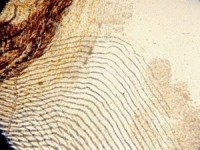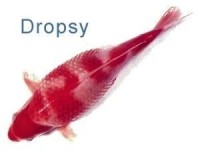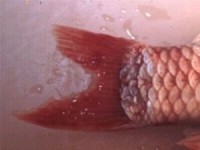Waterford Gardens 74 E. Allendale Rd. Saddle River NJ 07458908-266-6862


|
Koi Diseases (Bacterial) Regular observation of your fish will allow problems to be detected early. Be familiar with your fish's normal shape, size and color as well as swimming habits.
A change in these factors may signal a problem. The problem must be identified in order to know the steps to take for treatment. Every pond owner with fish, at some time or another, will probably have to medicate their pond.
Though Koi and Goldfish are extremely hardy, it is very important to keep a watch on their environment to keep them at their healthiest.
Attention should be paid to the quality of water and balance of the pond (i.e. pH levels etc.). However, if problems do occur, the first step is to remove the individual fish or decide whether to treat the entire pond.
It is sometimes difficult to be aware of a problem with a fish until its too late. Be aware of your fish's behavior patterns so changes can be detected early. A change in your fish's behavior is usually the first sign that that your fish are stressed or ill.
It is important that you know your pond's volume. All treatments are based on the number of gallons in the pond. The wrong dosage could result in killing your fish.
Columnaris (Flexibacter columnaris) or Cotton Wool Disease is another bacterial infection. The common name comes from the white tufts that develop around the mouth and spread to the body and fins, often leading to ulcers and a thin appearance.
Often mistaken for a fungal infection because of its mold-like lesions, Columnaris is a common bacterial infection in cultured fish, particularly livebearing fish and catfish. Its name is derived from columnar shaped bacteria, which are present in virtually all pond environments.
The bacteria are most likely to infect fish that have been stressed by such conditions as poor water quality, inadequate diet, or handling and shipping. Columnaris can enter the fish through the gills, mouth, or via small wounds on the skin. The disease is highly contagious and may be spread through contaminated nets, specimen containers, and even food.
Treatment with anti bacterial medicine is usually effective.
Raised scales (rather like a pine cone) and eyes standing out from the head.
Dropsy itself is not a disease, but rather a result of some other cause. Dropsy is a term given to the swelling that occurs internally in the fish. There are multiple possible causes. Sometimes it's not contageous, but sick fish should be isolated and treated since determining the actual cause may be impossible, and also because this will be easier on the fish.
The fish's body will become swelled with fluid it is unable to expel. Eventually the swelling will cause the scales to raise, giving the fish what is called the "pine-cone" appearance.
Diagnosis, One of these situations may be the cause:
Sudden swelling: A bacterial infection will cause internal bleeding.
Slow swelling: Growing tumors, or even parasites, in the fish may cause it to swell.
Slow swelling: Mycobacterium tuberculosis. Highly contageous!
Bacterial dropsy is infectious so treat with an anti bacterial remedy and if possible isolate affected Koi.
A number of bacteria are associated with finrot, lesions and internal hemorrhaging, notably Aeromonas and Pseudomonas. Ulcers usually start at the site of an injury, the bacteria then infect it causing further damage, and fungal infection can also occur.
Such holes result in osmoregulatory problems, leading to damaged kidneys and death if not treated. It is worth adding a weak salt solution to the pond as well as anti bacterial remedy, a concentration of 3gm per litter will help to restore the osmotic balance and reduce strain on the kidneys (make sure that the salt is fully dissolved before you add it to the pond).
Finrot is easily noticeable, the fins and/or tail look chewed and are red at the edges. Secondary bacterial and fungal infections can develop.
|



